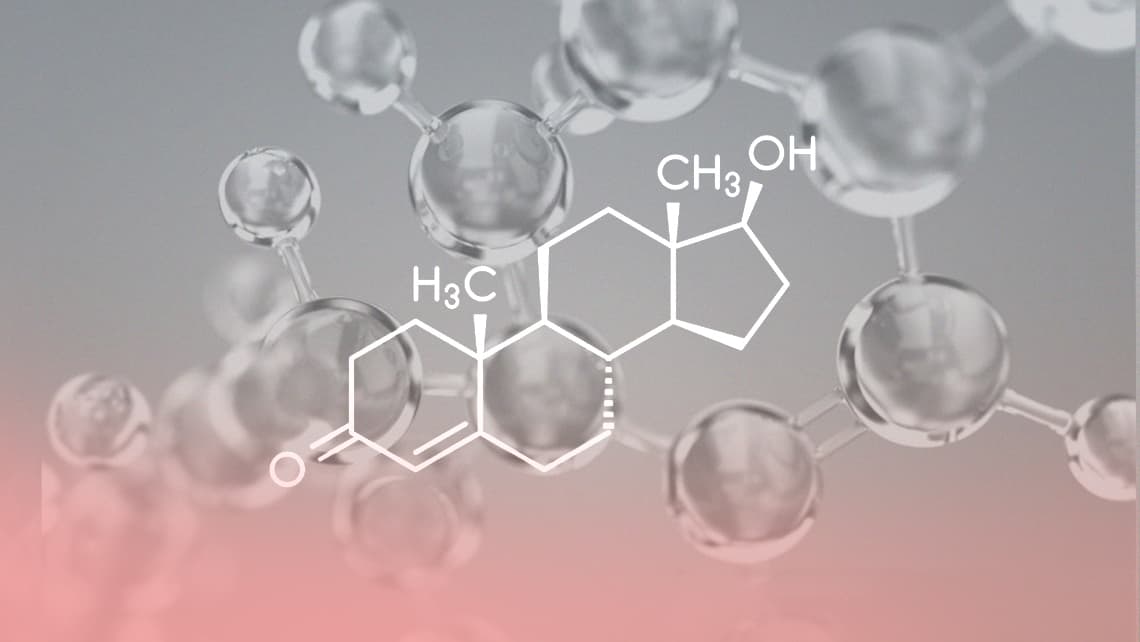
Hyperandrogenism: Causes and solutions
All women, especially in the reproductive age, physiologically produce a low concentration of male gonads or androgens. Some diseases cause an increase in the concentration of these male gonads, such as hyperandrogenism. Being able to diagnose it, determine the causes and establish how to treat it, are one of the main goals of specialists in reproductive medicine, because it is often associated with infertility.
Índice
What is hyperandrogenism?
Hyperandrogenism is defined as being the excess of androgens or male gonads in a woman’s blood. The most important hormones out of all these given their powerful action are testosterone and dihydrotestosterone. Other androgens of clinical importance are androstenedione and the dehydroepiandrosterone (DHEA or DHEA-S).
What are the symptoms of hyperandrogenism?
There are different symptoms associated with the excess of the production of androgens in women, many of which have male characteristics:
- Acne and seborrhea
- Hirsutism or hair growing on androgen sensitive areas of the body such as the face, back, abdomen and the chest.
- Alopecia: typically it begins in the vertex or crown area and then it starts to recede at the hairline on the forehead.
- Virilization: clitoral hypertrophy, deep voice, male muscle development.
- Amenorrhea or irregular periods or none at all.
- Infertility
- More prone to suffer from cardiovascular diseases such as high blood pressure (HBP), diabetes or dyslipidemia.
What are the causes of hyperandrogenism?
Androgens in women are mainly produced in two organs: ovaries and the adrenal glands. The possible cause of the disease, diagnosing and treating it can be established by taking into account the type of androgen that exists in a higher concentration and the symptoms.
Ovarian Hyperandrogenism:
There is usually a high concentration of androstenedione. The main cause of hyperandrogenism (70% of the cases) is the Polycystic Ovary Syndrome. Patients suffering from this usually have irregular periods or none at all due to ovulatory disorders, associated acne, hirsutism, alopecia… In the transvaginal ultrasound during the examination numerous localized antral follicles are observed on both ovaries typically on the ovarian cortex.
Some ovarian tumors can also cause the symptoms of hyperandrogenism, although this is much less common.
Adrenal hyperandrogenism:
In the adrenal hyperandrogenism the DHEA or DHEA-S is usually high. The main cause is the congenital adrenal hyperplasia, Cushing’s syndrome or certain adrenal tumors.
Congenital adrenal hyperplasia is a genetic disorder in which there is a mutation in some of the enzymes that metabolize steroid hormones. This results in an accumulation of androgens in the blood.
How can hyperandrogenism be diagnosed?
The main tools to diagnose a patient with hyperandrogenism correctly are:
- A detailed medical history is always the starting point. Inquire into the family medical history, evolution of the symptoms, menstrual pattern…
- Then, a thorough physical and gynecological examination is necessary. Location and the amount of hair, acne, alopecia and the weight and the height of the patient. It will be rounded off with a gynecological examination of the external and a transvaginal ultrasound.
- A blood test with the hormonal markers will be requested.
- If adrenal hyperandrogenism is suspected other imaging techniques such as Nuclear Magnetic Resonance will be requested.
- In some cases specific hormone stimulation and suppression tests are recommended.
How is hyperandrogenism treated?
Hyperandrogenism is mainly treated using different strategies:
- Drug treatment: The main drugs used in the clinical practice are:
- Antiandrogens: cyproterone acetate, spironolactone, flutamide or finasteride.
- Birth control
- Oral steroids are used for patients with congenital adrenal hyperplasia.
- If it is associated with obesity, it is important to acquire healthy lifestyle habits (Mediterranean diet, regular exercise).
- Hirsutism can be treated with laser hair removal.
- When it comes to tumors, surgical removal of the tumor will be assessed.
Can I be a mum if I have hyperandrogenism?
The answer is yes. The first thing you have to do is find the cause of the hyperandrogenism and treat it, if this is possible. For patients with polycystic ovary syndrome, the main cause of the infertility is the lack of ovulation. Ovulation induction drugs might be useful for these patients.
Can we prevent hyperandrogenism?
Unfortunately in the majority of cases it is complicated to prevent it.
If the hyperandrogenism is due to congenital adrenal hyperplasia, before trying to get pregnant, tests should be done on your partner to avoid any inherited diseases.
If obesity is associated with the disorder, the symptoms can be controlled by acquiring healthy lifestyle habits.
Is hyperandrogenism passed on?
Yes, congenital adrenal hyperplasia is a genetic disorder associated with different mutations, which can be passed down to our children, who can develop the disease.
As for other conditions such as polycystic ovary syndrome, although there might be associated genetic factors, passing it down to your offspring is multifactorial, there are numerous causes.
Dr Cristina García-Ajofrín, gynaecologist of Instituto Bernabeu
